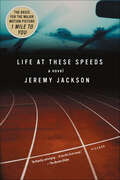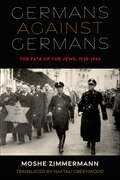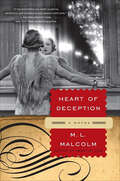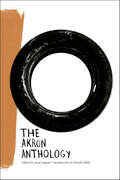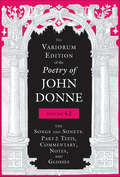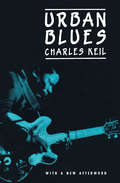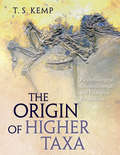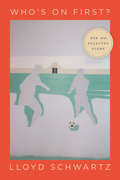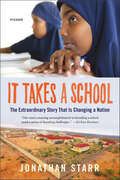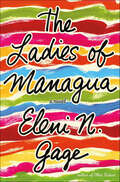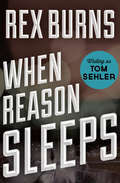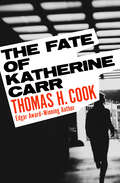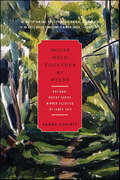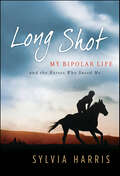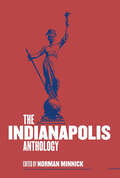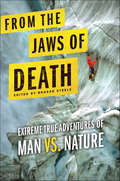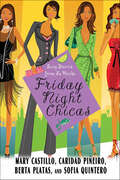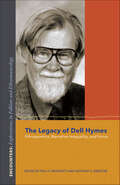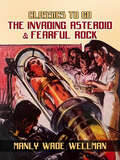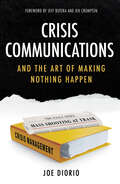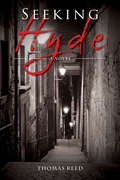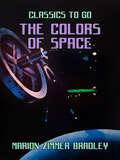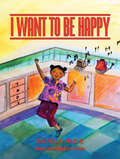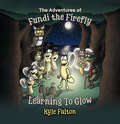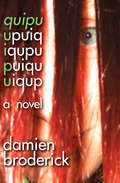- Table View
- List View
Life at These Speeds: A Novel
by Jeremy JacksonThe Sweet Hereafter meets Chariots of Fire in Life at These Speeds, the touching first novel from Jeremy Jackson about tragedy and healing. The basis for the major motion picture 1 Mile to You. "Refreshing...Reminds us that whether we run, play football, sing or write, we need to find the joy in what we do."—Chicago Sun-Times In eighth grade Kevin Schuler is a popular kid with a decent, if not stellar, record on the track. Yet after fate takes him off a bus that crashes and kills his fellow students, including his girlfriend, Kevin inexplicably becomes a track phenomenon. Separated from his memory and distanced from his own life, he effortlessly smashes records and gains national attention, until he finds that he can no more remain apart from himself than he can from the ground beneath his feet.
Germans against Germans: The Fate of the Jews, 1938–1945 (Olamot Series in Humanities and Social Sciences)
by Moshe ZimmermannAmong the many narratives about the atrocities committed against Jews in the Holocaust, the story about the Jews who lived in the eye of the storm—the German Jews—has received little attention. Germans against Germans: The Fate of the Jews, 1938–1945, tells this story—how Germans declared war against other Germans, that is, against German Jews. Author Moshe Zimmermann explores questions of what made such a war possible? How could such a radical process of exclusion take place in a highly civilized, modern society? What were the societal mechanisms that paved the way for legal discrimination, isolation, deportation, and eventual extermination of the individuals who were previously part and parcel of German society? Germans against Germans demonstrates how the combination of antisemitism, racism, bureaucracy, cynicism, and imposed collaboration culminated in "the final solution."
Heart of Deception: A Novel
by M.L. MalcolmFrom M. L. Malcolm, the acclaimed author of Heart of Lies, comes a powerful sequel that spans the years from World War II to the turbulent 1960s—the riveting story of a family struggling with choices forced upon them by war . . . and the consequences that will take a generation to unfold.Aman of many contradictions, Leo Hoffman is a Hungarian national with a French passport, a wealthy businessman with no visible means of support, and a devoted father who hasn't seen his daughter in years. He is also a spy.Recruited by the Allies to help lay the groundwork for their invasion of North Africa, Leo intends to engage in as little espionage as possible—just enough to earn his American citizenship so he can get to New York and reunite with his daughter, Maddy. But while Leo dodges death in France and Morocco, Maddy is learning shocking truths about her father's mysterious past—haunting knowledge that will compel her down her own dangerous path of deception and discovery.
The Akron Anthology (Belt City Anthologies)
by David Giffels Jason Segedy Joanna RichardsAn evocative collection of essays, poetry, photography and more from some of Akron, Ohio&’s best authors, artists, and activists. Between 1910 and 1920, Akron, Ohio, tripled in size, making it the fastest growing city in the United States. Its period of rapid growth coincided with the expansion of the rubber and tire industry, which in turn corresponded with the automobile boom. But since the mid-1970s, industry has abandoned Akron, and the city has lost thirty-one percent of its population. Once-opulent neighborhoods are now swaths of abandoned homes, and the factories that made Akron the Rubber Capital of the World lie dormant. Edited by Jason Segedy, and bringing together established writers like Rita Dove and David Giffels with the work of emerging voices, The Akron Anthology collects essays, poems, and photographs from the writers, artists, and activists who call Akron home. Here you&’ll find stories that include: The diaries of a doorman The trials and triumphs of refugees who have relocated to the city A portrait of Jamie Stillman, world-renowned effects pedal manufacturer Archie the talking snowman.
The Variorum Edition of the Poetry of John Donne, Volume 4.2: The Songs and Sonets (The\variorum Edition Of The Poetry Of John Donne Ser.)
by John DonneThis volume, the ninth in the series of The Variorum Edition of the Poetry of John Donne, presents newly edited critical texts of 25 love lyrics. Based on an exhaustive study of the manuscripts and printed editions in which these poems have appeared, Volume 4.2 details the genealogical history of each poem, accompanied by a thorough prose discussion, as well as a General Textual Introduction of the Songs and Sonets collectively. The volume also presents a comprehensive digest of the commentary on these Songs and Sonets from Donne's time through 1999. Arranged chronologically within sections, the material for each poem is organized under various headings that complement the volume's companions, Volume 4.1 and Volume 4.3.
Urban Blues
by Charles KeilCharles Keil examines the expressive role of blues bands and performers and stresses the intense interaction between performer and audience. Profiling bluesmen Bobby Bland and B. B. King, Keil argues that they are symbols for the black community, embodying important attitudes and roles—success, strong egos, and close ties to the community. While writing Urban Blues in the mid-1960s, Keil optimistically saw this cultural expression as contributing to the rising tide of raised political consciousness in Afro-America. His new Afterword examines black music in the context of capitalism and black culture in the context of worldwide trends toward diversification. "Enlightening. . . . [Keil] has given a provocative indication of the role of the blues singer as a focal point of ghetto community expression."—John S. Wilson, New York Times Book Review"A terribly valuable book and a powerful one. . . . Keil is an original thinker and . . . has offered us a major breakthrough."—Studs Terkel, Chicago Tribune "[Urban Blues] expresses authentic concern for people who are coming to realize that their past was . . . the source of meaningful cultural values."—Atlantic "An achievement of the first magnitude. . . . He opens our eyes and introduces a world of amazingly complex musical happening."—Robert Farris Thompson, Ethnomusicology "[Keil's] vigorous, aggressive scholarship, lucid style and sparkling analysis stimulate the challenge. Valuable insights come from treating urban blues as artistic communication."—James A. Bonar, Boston Herald
The Origin of Higher Taxa: Palaeobiological, Developmental, and Ecological Perspectives
by T.S. KempIn the grand sweep of evolution, the origin of radically new kinds of organisms in the fossil record is the result of a relatively simple process: natural selection marching through the ages. Or is it? Does Darwinian evolution acting over a sufficiently long period of time really offer a complete explanation, or are unusual genetic events and particular environmental and ecological circumstances also involved? With The Origin of Higher Taxa, Tom Kemp sifts through the layers of paleobiological, genetic, and ecological evidence on a quest to answer this essential, game-changing question of biology. Looking beyond the microevolutionary force of Darwinian natural selection, Kemp enters the realm of macroevolution, or evolution above the species level. From the origin of mammals to the radiation of flowering plants, these large-scale patterns—such as the rise of novel organismal design, adaptive radiations, and lineage extinctions—encompass the most significant trends and transformations in evolution. As macroevolution cannot be studied by direct observation and experiment, scientists have to rely on the outcome of evolution as evidence for the processes at work, in the form of patterns of species appearances and extinctions in a spotty fossil record, and through the nature of species extant today. Marshalling a wealth of new fossil and molecular evidence and increasingly sophisticated techniques for their study, Kemp here offers a timely and original reinterpretation of how higher taxa such as arthropods, mollusks, mammals, birds, and whales evolved—a bold new take on the history of life.
Who's on First?: New and Selected Poems (Phoenix Poets)
by Lloyd SchwartzNew and selected poems by renowned poet Lloyd Schwartz. For more than four decades, readers and critics have found Lloyd Schwartz’s poems unlike anyone else’s—a rare combination of the heartbreaking and the hilarious. With his ear for the poetry of the vernacular, Schwartz offers us a memorable cast of characters—both real and imagined, foolish and oracular. Readers experience his mother’s piercing flashes of memory, the perverse comic wisdom of Gracie Allen, the uninhibited yet loving exhibitionists of antique pornography, and eager travelers crossing America in a club-car or waiting in a Brazilian airport. Schwartz listens to these people without judging—understanding that they are all trying to live their lives, whenever possible, with tenderness, humor, and grace.Who’s on First? brings together a selection of poems from all of Schwartz’s previous collections along with eagerly awaited new poems, highlighting his formal inventiveness in tangling and untangling the yarn of comedy and pathos. Underlying all of these poems is the question of what it takes and what it costs to make art.
It Takes a School: The Extraordinary Story That Is Changing a Nation
by Jonathan StarrA story of David and Goliath proportions, how an American hedge fund manager created a unique school in Somaliland whose students, against all odds, have come to achieve success beyond anyone’s wildest dreamsJonathan Starr, once a cutthroat hedge fund manager, is not your traditional do-gooder, and in 2009, when he decided to found Abaarso, a secondary school in Somaliland, the choice seemed crazy to even his closest friends. “Why,” they wondered, “would he turn down a life of relative luxury to relocate to an armed compound in a breakaway region of the world’s #1 failed state?” To achieve his mission, Starr would have to overcome profound cultural differences, broken promises, and threats to his safety and that of his staff. It Takes a School is the story of how an abstract vision became a transformative reality, as Starr set out to build a school in a place forgotten by the world. It is the story of a skeptical and clan-based society learning to give way to trust. And it’s the story of the students themselves, including a boy from a family of nomads who took off on his own in search of an education and a girl who waged a hunger strike in order to convince her strict parents to send her to Abaarso. Abaarso has placed forty graduates and counting in American universities, from Harvard to MIT, and sends Somaliland a clear message: its children can compete with anyone in the world. Now the initial question Starr was asked demands another: “If such a success can happen in an unrecognized breakaway region of Somalia, can it not happen anywhere?”
The Ladies of Managua: A Novel
by Eleni N. GageLushly evocative of Nicaragua, its tumultuous history, and vibrant present, Eleni N. Gage's The Ladies of Managua brings you into the lives of three strong and magnetic women, as they uncover the ramifications of the choices they made in their pasts and begin to understand the ways in which love can shape their futures.When Maria Vazquez returns to Nicaragua for her beloved grandfather's funeral, she brings with her a mysterious package from her grandmother's past—and a secret of her own. And she also carries the burden of her tense relationship with her mother Ninexin, once a storied revolutionary, now a tireless government employee. Between Maria and Ninexin lies a chasm created by the death of Maria's father, who was killed during the revolution when Maria was an infant, leaving her to be raised by her grandmother Isabela as Ninexin worked to build the new Nicaragua. As Ninexin tries to reach her daughter, and Maria wrestles with her expectations for her romance with an older man, Isabela, the mourning widow, is lost in memories of attending boarding school in 1950's New Orleans, where she loved and lost almost sixty years ago. When the three women come together to bid farewell to the man who anchored their family, they are forced to confront their complicated, passionate relationships with each other and with their country—and to reveal the secrets that each of them have worked to conceal.
When Reason Sleeps
by Rex BurnsA forcibly retired marine investigates the disappearance of a young girlLieutenant-Colonel Jack Steele is too honest for Washington. If any other Marine Corps investigator had noticed a congressman&’s corruption, he might have kept his mouth shut. But Steele knows his ultimate duty and blows the whistle on a treasonous lawmaker, earning himself a pat on the back and a swift kick out the door. Steele returns to his hometown of San Diego, hoping for a quiet retirement. Instead he finds a chilling mystery that will make him question everything about the country he spent so long trying to protect. While helping a friend search for his missing granddaughter, Steele makes his way to Colorado. There he uncovers a sinister satanic cult, whose acolytes relish sacrificial death, and who won&’t think twice about trying to take out an honorable ex-marine.
The Fate of Katherine Carr: A Novel
by Thomas H. CookA Publishers Weekly Best Book of the Year: After years of grief and rage, a man finds new purpose in investigating a woman’s unsolved disappearance. George Gates’s little boy was killed seven years ago and he has yet to find the cold comfort of seeing someone pay for the crime. Once a world-traveling writer, he now toils away at a local newspaper, quietly seething and plotting imaginary vengeance against the unknown murderer.Then, during a conversation with the now-retired detective who worked his son’s case, he learns about a poet named Katherine Carr who disappeared twenty years earlier, leaving writings behind that may or may not contain useful clues. As he grows obsessed with the mystery, he’s assigned to interview an orphan with a rare fatal disease, and the two become an unlikely team in their quest to learn the fate of Katherine Carr, in this emotionally compelling novel by a “master” and winner of the prestigious Edgar Award (Chicago Tribune). “[An] eerily poignant novel.” —Publishers Weekly (starred review)“Every Thomas H. Cook novel is a subtle mind game, but The Fate of Katherine Carr is positively haunting.” —The New York Times Book Review“As much an investigation into character as it is a cold-case mystery.” —Booklist“Disturbing, psychologically complex . . . At each level, the novel ponders questions of good and evil, of guilt and retribution, and the power of storytelling itself.” —Associated Press
House Held Together by Winds (National Poetry Series)
by Sabra Loomis"These are my songlines; they helped me to re-connect with the landscape, and with my own life," says Sabra Loomis of the poems which appear in House Held Together by Winds. Winner of the 2007 National Poetry Series Open Competition as selected by James Tate (winner of the Pulitzer Prize and National Book Award), Sabra's work perpetuates NPS's tradition of promoting exceptional poetry from lesser known poets.For over twenty years, the National Poetry Series has discovered many new and emerging voices and has been instrumental in launching the careers of poets and writers such as Billy Collins, Mark Doty, Denis Johnson, Cole Swensen, Thylias Moss, Mark Levine, and Dionisio Martinez.
Long Shot: My Bipolar Life and the Horses Who Saved Me
by Sylvia HarrisCombine Seabiscuit with Manic—throw in a touch of HBO’s “Temple Grandin”—and you get Long Shot, a truly remarkable memoir by Sylvia Harris. A single mother of three, Harris was crippled by bipolar depression, until she discovered the miraculous healing and calming effect of horses—a revelation that ultimately enabled her to manage her illness, conquer the sexism of her field, and triumph as a champion jockey in the male-dominated world of horse racing. A fascinating, courageous, and ultimately redemptive true story, Long Shot has won high praise from Phyllis Chesler Ph.D., author of Women and Madness, who says, “[Harris’s] attempt to find balance, joy, connectedness, and purpose in life constitutes a great adventure story.”
The Indianapolis Anthology (Belt City Anthologies)
by Norman MinnickAn anthology of essays & poetry offering a reconsideration of one of America&’s most misunderstood cities. Is Indianapolis just another midwestern city to fly over on the way to bigger and better destinations? Or is it, as locals know, a place where different peoples and ideals converge to create a rich cultural center? The Indianapolis Anthology showcases Naptown&’s vibrancy and diversity with pieces from journalists, poets, historians, established community voices, and first-time writers. The Circle City is more than the home of the Indianapolis 500, John Dillinger, Kenneth &“Babyface&” Edmonds, Kurt Vonnegut, Prozac, and Wonder Bread. In these pages, you&’ll find: · lawn chairs in the beds of pick-ups · Punk rock in Naptown · suffragists and entrepreneurs · cement pietàs · dog bakeries and yoga studios · red brick bungalows and war memorials · steakburgers and Mexican seafood; pho and sauerbraten · and more In other words, you'll find images from a city that is truly a cross section of today&’s America. Edited by Norman &“Buzz&” Minnick and with contributions from Etheridge Knight, Terrance Hayes, Michael Martone, and Karen Kovacik. An insiders&’ look that will make you see a great midwestern city in a brand-new light.
From the Jaws of Death: Extreme True Adventures of Man vs. Nature
by Brogan SteeleA harrowing collection of true tales of death and survival under the most extreme conditions imaginableThere comes a time in some men's lives when their physical and emotional states are pushed to the limit. Maybe their boat has capsized and they are adrift in the ocean, or maybe they've fallen into an ice crevasse, with no apparent way out. It is in these moments men discover what they are truly made of and whether they have the courage and physical strength to come back From the Jaws of Death.This explosive collection showcases twenty-three stories of adventure gone horribly wrong, including:--"The Devil's Thumb" by Jon Krakauer: the bestselling author recounts his perilous solo climb of Alaska's infamous Devil's Thumb--"Surviving the St. Patrick" by Spike Walker: the crew of a fishing boat face crushing waves in the middle of a winter storm in the Gulf of Alaska--"Look for a Corpse" by Larry Kaniut: a man buried by an avalanche fights to make it out alive--"The Boat Journey" by Sir Ernest Shackleton: when his expedition's ship is destroyed, Shackleton and five of his crewmembers resolve to cross 800 ocean miles in a lifeboat to look for help--And many more!This is one of the finest and most extreme collections of true adventure ever assembled.
Friday Night Chicas: Sexy Stories from La Noche
by Caridad Piñeiro Sofia Quintero Mary Castillo Berta PlatasWhether they're flirting en espanol, gossiping over mojitos, or dancing with their latest papi chulos, the characters in Friday Night Chicas prove that there is nothing quite like a night out with your chicas. Set in New York City, Miami's South Beach, downtown Chicago, and L.A., these four flirty novellas explore dating, marriage, friendship, and sex, through the eyes of four different Latina women. Mary Castillo's Friday Night in L.A.: Isela isn't looking for a one-night stand; she's desperate for one last shot at saving her career. Her ticket is Hollywood's director du jour Tyler Banks, but one major mistake could cost her everything.Caridad Pineiro's Friday Night in South Beach: It's Tori's thirtieth birthday and all she wants is a nice quiet night with her family and friends. However, Tori's friends have other plans and during an overnight casino cruise, Tori finds herself taking the gamble of her life!Berta Platas's Friday Night in Chicago: The once-shy Cali has decided to attend her high school reunion. She slips into her slinkiest Donna Karan and puts on her highest Manolos. After all, she's out to seek revenge, Latina-style. . . Sofia Quintero's Friday Night in New York City: Gladys's friends throw her a bachelorette party at one of NYC's raunchiest male strip joints. They expected a party, but they didn't expect the not-so-blushing bride to disappear with one of the strippers!
The Legacy of Dell Hymes: Ethnopoetics, Narrative Inequality, and Voice (Encounters: Explorations In Folklore And Ethnomusicology Ser.)
by Anthony K. Webster Paul V. KroskrityThe accomplishments and enduring influence of renowned anthropologist Dell Hymes are showcased in these essays by leading practitioners in the field. Hymes (1927–2009) is arguably best known for his pioneering work in ethnopoetics, a studied approach to Native verbal art that elucidates cultural significance and aesthetic form. As these essays amply demonstrate, nearly six decades later ethnopoetics and Hymes's focus on narrative inequality and voice provide a still valuable critical lens for current research in anthropology and folklore. Through ethnopoetics, so much can be understood in diverse cultural settings and situations: gleaning the voices of individual Koryak storytellers and aesthetic sensibilities from century-old wax cylinder recordings; understanding the similarities and differences between Apache life stories told 58 years apart; how Navajo punning and an expressive device illuminate the work of a Navajo poet; decolonizing Western Mono and Yokuts stories by bringing to the surface the performances behind the texts written down by scholars long ago; and keenly appreciating the potency of language revitalization projects among First Nations communities in the Yukon and northwestern California. Fascinating and topical, these essays not only honor a legacy but also point the way forward.
The Invading Asteroid & Fearful Rock (Classics To Go)
by Manly Wade WellmanThe Invading Asteroid & Fearful Rock by Manly Wade Wellman is a captivating anthology that masterfully weaves science fiction and horror across two riveting stories. In "The Invading Asteroid," set in the year 2675, the narrative unfolds during an intense interplanetary conflict between Earth and Mars. As the Interplanetary War escalates, three young Terrestrial soldiers, once university students, embark on a perilous unauthorized space mission. Their journey leads to the discovery of a Martian scout and a massive artificial asteroid harboring a Martian invasion force. This thrilling tale delves into themes of bravery and loyalty amidst space warfare, making it a must-read for fans of human-alien encounters and science fiction. Meanwhile, "Fearful Rock" transports readers to the eerie Ozark Mountains during the American Civil War, where historical fiction meets horror. The menacing Persil Mandifer and his grotesque son Larue engage in dark rituals, while Enid Mandifer's shocking revelation about her parentage plunges her into a supernatural struggle. Union officer Lieutenant Kane Lanark, along with Parson Jager, faces spectral apparitions and living corpses as they confront the malevolent forces beneath Fearful Rock. This story explores the eternal battle between good and evil, set against a backdrop of Civil War history and supernatural mystery. Wellman's anthology offers a compelling exploration of both the vastness of space and the haunting depths of human fear, appealing to those who cherish tales of interstellar conflict and the supernatural. Dive into The Invading Asteroid & Fearful Rock for an unforgettable reading experience that combines the best of science fiction and horror, promising a gripping journey through time and space.
Crisis Communications: and the Art of Making Nothing Happen
by Joseph J. DiorioCrises happen. But how they are handled makes all the difference in the world.It's 2019. A gunman enters Trask International, a suburban Washington, D.C. office, leaving three people dead and dozens injured. One of the biggest differences between this tragedy and \the many others that have unfortunately occurred recently? They were ready for this. Trask International had a comprehensive Crisis Communications plan.No, the plan didn't deploy bulletproof shields, nor did it call upon a secret superhero to fight off the gunman. But the plan did spell out how the business should respond in public to what happened, keep the focus on the true victims and not position the business as one, and how the business could—and would—get things back to normal as quickly as possible.Crisis Communications and the Art of Making Nothing Happen is a fast-paced story told in two parts—the first tells the tale of the shooting itself, while the second presents a deep dive into how a business prepares for a crisis. It takes a close look at the teamwork involved with crisis communication planning, and, ultimately, how preparation helps keep a bad situation from getting worse.
Seeking Hyde
by Thomas Reed2018 Foreword INDIES Book of the Year Awards Finalist! Reveal the fascinating history behind Robert Louis Stevenson and discover how the epic horror story of The Strange Case of Dr. Jekyll and Mr. Hyde came to fruition. Struggling to write a worthy successor to his hit Treasure Island, Robert is instead focused on defying his father's wishes, amidst facing charges for driving an old friend's fatal alcoholism, all while his American wife—ten years his junior—pushes him relentlessly to write one more great novel. After Dr. Jekyll and Mr. Hyde come to him in a dream, Robert writes tirelessly until he has created this classic masterpiece. His work is met with great acclaim, yet is ultimately blamed for the inspiration of a gruesome series of murders now unleashed in London's East End.Seeking Hyde follows Robert Louis Stevenson through the dark underworld of Victorian London, exploring the realm of "what if?", as he wrestles with the demons of prostitution, police corruption, and, finally, Jack the Ripper himself.
The Colors Of Space (Classics To Go)
by Marion Zimmer Bradley"The Colors of Space" by Marion Zimmer Bradley is a captivating anthology that transports readers to a universe teeming with mystery and intrigue. The centerpiece story, "The Colors of Space," delves into the tensions between humans and the enigmatic Lhari race. Young Bart Steele becomes embroiled in a high-stakes adventure as he seeks the truth behind the Lhari's warp-drive technology, a secret that could shift the galaxy's power dynamics. Disguising himself as a Lhari, Bart navigates a labyrinth of interstellar politics and conspiracies, confronting themes of cultural misunderstanding and the pursuit of knowledge. This story not only thrills with its narrative of adventure but also prompts reflection on the ethical dimensions of technology and the potential for harmony between different species. The anthology is a must-read for fans of classic science fiction, offering a rich exploration of exploration itself and the complexities of bridging cultural divides. With Bradley's masterful storytelling, "The Colors of Space" invites readers to contemplate the possibilities of coexistence and the courage required to confront the unknown, making it an essential addition to any science fiction collection.
I Want to be Happy
by Rachel A. MazurI Want to Be Happy is a reflective guide on parenting, offering a values-based approach to decision-making. It emphasizes the importance of nurturing happiness and joy, not just in children, but in the hearts of people everywhere. This book serves as an inspiring backdrop, encouraging readers to create and foster a joyful and fulfilling environment for their families.
The Adventures of Fundi the Firefly: Learning To Glow
by Kyle FultonFundi is a young firefly with a big problem: he can’t glow like the other fireflies. Determined to find his light, Fundi sets off on an enchanting journey with his spirited sidekick, Flo the Fairy. Together, they seek advice and guidance from the wise and wonderful creatures of the forest. Will Fundi discover the secret to shining bright? Find out in this heartwarming tale of friendship, courage, and self-discovery!
Quipu
by Damien BroderickCaroline is about to go psychotic—and given her family, it&’s no surprise. Joseph cannot talk to women even if he is a certified high-IQ clever dick trying to take snapshots of the end of the universe. Ray and Marj have their own hassles with in‑laws, but student terrorists get in the way. Meanwhile, Brian, misogynist and wit, appalls everyone in the quipu world. Quipus? They are the scandalous fanzines that hikes traded before blogs were invented. Hikes? High-IQ clever dicks, of course. In Quipu, Australian writer Damien Broderick reimagines his prize‑winning 1984 novel Transmitters as the surprising saga of a &“family&” of genius‑level, one‑of‑a‑kind individuals.
